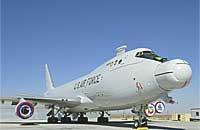India developing laser-based ballistic missile defence system
19 Jan 2009
 New Delhi: India is on its way to develop an integrated, laser-based, ballistic missile defence system (BMD) that will intercept and destroy hostile missiles even as they begin their ascent from launch pads thousands of kilometres away.
New Delhi: India is on its way to develop an integrated, laser-based, ballistic missile defence system (BMD) that will intercept and destroy hostile missiles even as they begin their ascent from launch pads thousands of kilometres away.
 "If you have a laser based system on an airborne or seaborne platform, it can travel at the speed of light and in a few seconds, we can kill a ballistic missile coming towards us," DRDO's chief controller R&D, missiles & strategic systems, Dr VK Saraswat, told a news agency here.
"If you have a laser based system on an airborne or seaborne platform, it can travel at the speed of light and in a few seconds, we can kill a ballistic missile coming towards us," DRDO's chief controller R&D, missiles & strategic systems, Dr VK Saraswat, told a news agency here.
"Suppose if the missile is being launched at Indian target from 2000 km. If I have to kill it there, I will have to travel that distance, which will require many minutes to be there. If you have a laser system travelling at a speed of light, it can kill that missile in its boost phase (just after launch) even before it has travelled a few hundred kilometres," Dr Saraswat, who is also air defence programme director and distinguished scientist, said.
Elaborating on the scenario Saraswat explained that a ballistic missile launch has three segments. It is in its boost phase when launched, followed by the mid course phase when it reaches the highest point of its trajectory and then the terminal phase when it plunges towards the target.
Saraswat said ideally a ballistic missile, carrying nuclear or conventional warhead, ought to be destroyed in the boost phase. "It's easier to kill a missile in boost phase as it has not gained much speed and is easier to target. It cannot deploy any countermeasures and it is vulnerable at that time," Dr Saraswat said.
Dr Saraswat also revealed that DRDO laboratories like the Laser and Science Technology Centre (LASTEC) were developing laser-based and related technologies. "In LASTEC, we are developing many of these technologies. We have to package these technologies on aircraft like the Americans have done on their systems," he said.
Dr Saraswat said it would take another 10-15 years, however, for defence research institutes to field a fully developed version of the system.
"It is an involved process and not just about producing lasers. We have to put in many systems like the surveillance and tracking systems together for such a system to work. It will take another 10-15 years before we talk of integrating all these elements," he said.







.webp)














